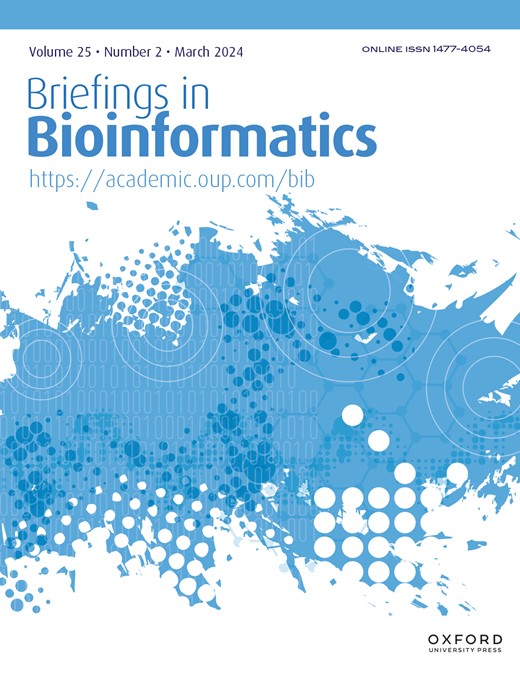新型系统生物学实验流水线揭示了马泰松醇在前列腺癌中的抗转移潜力:网络药理学、生物信息学和实验验证的综合方法
IF 6.8
2区 生物学
Q1 BIOCHEMICAL RESEARCH METHODS
引用次数: 0
摘要
马泰瑞林醇(MAT)是一种植物木质素,因其在乳腺癌和前列腺癌等激素敏感性癌症中的抗癌特性而闻名,它为治疗转移性前列腺癌(mPC)提供了一条前景广阔但尚未充分开发的途径。为了阐明其特定的治疗靶点和机制,我们的研究采用了一种综合方法,将网络药理学(NP)、生物信息学、基于基因MANIA的功能关联(GMFA)和实验验证融为一体。通过挖掘在线数据库,我们发现了 27 个 mPC 和 MAT 的共同靶点,通过 STRING 构建了 MAT-mPC 蛋白-蛋白相互作用网络,并利用 CytoHuba 确定了 11 个中心靶点,如 EGFR、AKT1、ERBB2、MET、IGF1、CASP3、HSP90AA1、HIF1A、MMP2、HGF 和 MMP9。利用DAVID,基因本体(GO)分析突出了转移相关过程,如上皮-间质转化、细胞迁移的正调控,以及关键的《京都基因与基因组百科全书》(KEGG)通路,包括癌症、前列腺癌、PI3K-Akt和MAPK信号转导,而UALCAN和GEPIA2等网络资源则肯定了前11个中心靶点在mPC患者生存分析和基因表达模式中的临床意义。我们创新的 GMFA 富集方法进一步丰富了网络药理学研究结果。分子对接分析表明了 MAT 与 11 个中心靶点之间的实质性相互作用。模拟研究证实了 MAT 与选定靶点的稳定相互作用。利用定量实时反转录 PCR 和各种基于细胞的检测方法在 PC3 细胞中进行的实验验证证实了 MAT 对 mPC 的抗转移作用。因此,这一详尽的 NP 分析,辅以 GMFA、分子对接、分子动力学模拟和实验验证,强调了 MAT 在通过不同治疗途径靶向 mPC 方面的多方面作用。然而,要巩固这些发现,全面的体外验证势在必行。本文章由计算机程序翻译,如有差异,请以英文原文为准。
Novel systems biology experimental pipeline reveals matairesinol’s antimetastatic potential in prostate cancer: an integrated approach of network pharmacology, bioinformatics, and experimental validation
Matairesinol (MAT), a plant lignan renowned for its anticancer properties in hormone-sensitive cancers like breast and prostate cancers, presents a promising yet underexplored avenue in the treatment of metastatic prostate cancer (mPC). To elucidate its specific therapeutic targets and mechanisms, our study adopted an integrative approach, amalgamating network pharmacology (NP), bioinformatics, GeneMANIA-based functional association (GMFA), and experimental validation. By mining online databases, we identified 27 common targets of mPC and MAT, constructing a MAT-mPC protein–protein interaction network via STRING and pinpointing 11 hub targets such as EGFR, AKT1, ERBB2, MET, IGF1, CASP3, HSP90AA1, HIF1A, MMP2, HGF, and MMP9 with CytoHuba. Utilizing DAVID, Gene Ontology (GO) analysis highlighted metastasis-related processes such as epithelial–mesenchymal transition, positive regulation of cell migration, and key Kyoto Encyclopedia of Genes and Genomes (KEGG) pathways, including cancer, prostate cancer, PI3K-Akt, and MAPK signaling, while the web resources such as UALCAN and GEPIA2 affirmed the clinical significance of the top 11 hub targets in mPC patient survival analysis and gene expression patterns. Our innovative GMFA enrichment method further enriched network pharmacology findings. Molecular docking analyses demonstrated substantial interactions between MAT and 11 hub targets. Simulation studies confirmed the stable interactions of MAT with selected targets. Experimental validation in PC3 cells, employing quantitative real-time reverse-transcription PCR and various cell-based assays, corroborated MAT’s antimetastatic effects on mPC. Thus, this exhaustive NP analysis, complemented by GMFA, molecular docking, molecular dynamics simulations, and experimental validations, underscores MAT’s multifaceted role in targeting mPC through diverse therapeutic avenues. Nevertheless, comprehensive in vitro validation is imperative to solidify these findings.
求助全文
通过发布文献求助,成功后即可免费获取论文全文。
去求助
来源期刊

Briefings in bioinformatics
生物-生化研究方法
CiteScore
13.20
自引率
13.70%
发文量
549
审稿时长
6 months
期刊介绍:
Briefings in Bioinformatics is an international journal serving as a platform for researchers and educators in the life sciences. It also appeals to mathematicians, statisticians, and computer scientists applying their expertise to biological challenges. The journal focuses on reviews tailored for users of databases and analytical tools in contemporary genetics, molecular and systems biology. It stands out by offering practical assistance and guidance to non-specialists in computerized methodologies. Covering a wide range from introductory concepts to specific protocols and analyses, the papers address bacterial, plant, fungal, animal, and human data.
The journal's detailed subject areas include genetic studies of phenotypes and genotypes, mapping, DNA sequencing, expression profiling, gene expression studies, microarrays, alignment methods, protein profiles and HMMs, lipids, metabolic and signaling pathways, structure determination and function prediction, phylogenetic studies, and education and training.
 求助内容:
求助内容: 应助结果提醒方式:
应助结果提醒方式:


